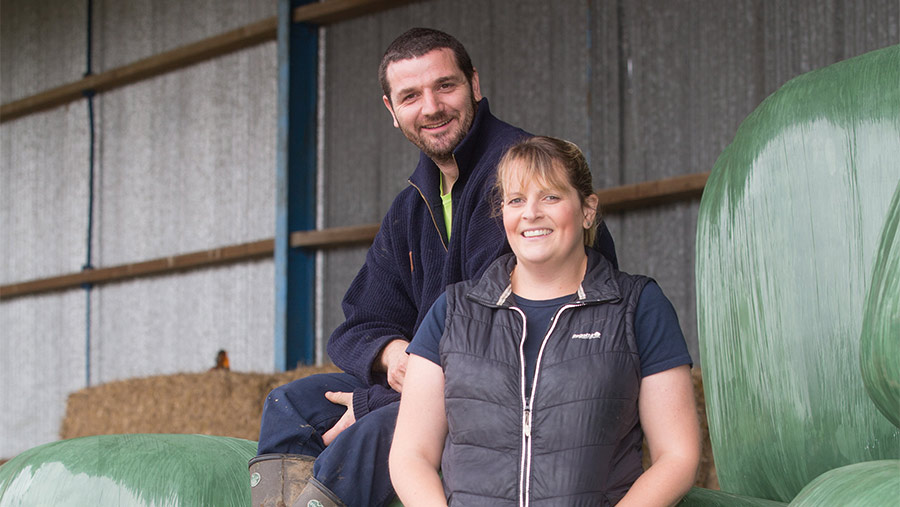Farmer Focus: Worming and rotational grazing pays dividends
 © Tim Scrivener
© Tim Scrivener We normally do eight-week weights on the recorded stock. This year we have weighed every animal on the farm as well as doing second vaccinations, worming and fly control.
It was a lot of extra work, but we’d ideally like to weigh and condition-score the ewes at least two or three times a year.
Ideally it would be at weaning (eight-week weight), tupping and scanning, to better look after those at either end of the bell curve – particularly the bottom.
We normally create a “thin” mob after scanning, based on condition scores. This mob currently averages a liveweight of 72kg. They were given priority grazing and are no longer thin.
See also: How one farmer is delivering 1.8 lambs sold per ewe
We hope this will allow us to create a better picture of individuals. Our ewe liveweight range was 46-103kg. The flock average – including ewe lambs – was 68kg.
We have 10 groups of lambs. The best performing group was our East Friesian dairy crosses, which had grown at 420g liveweight gain/day to average 28kg. The worst were some non-recorded twins which did 286g/day to average 20kg.
These had been on our poorest pasture. Covers were no more than 1,500kg DM/ha. They were moved about two weeks prior to weighing so we will wean them last and let them catch up.
Our recorded ewe lambs – mostly singles with some twins – on our best ground grew at 347g/day to average 21kg. Our recorded myomax twins on ancient parkland did 357g/day to reach an average weight of 25kg.
We are in our third dry spring with precious little rain from March to the summer and some very hot periods over 30C.
This year’s eight-week weights are equivalent to last year’s weaning weights and our ewes are at least one condition score better this year.
This is down to two things. Firstly, we’ve improved our grassland management with paddock grazing which we did before lambing and resumed four weeks into lambing.
Secondly, we wormed the ewes for Barbers pole worm. We very rarely worm a ewe, but through the dry spring the sheep grazed exceptionally low down.
